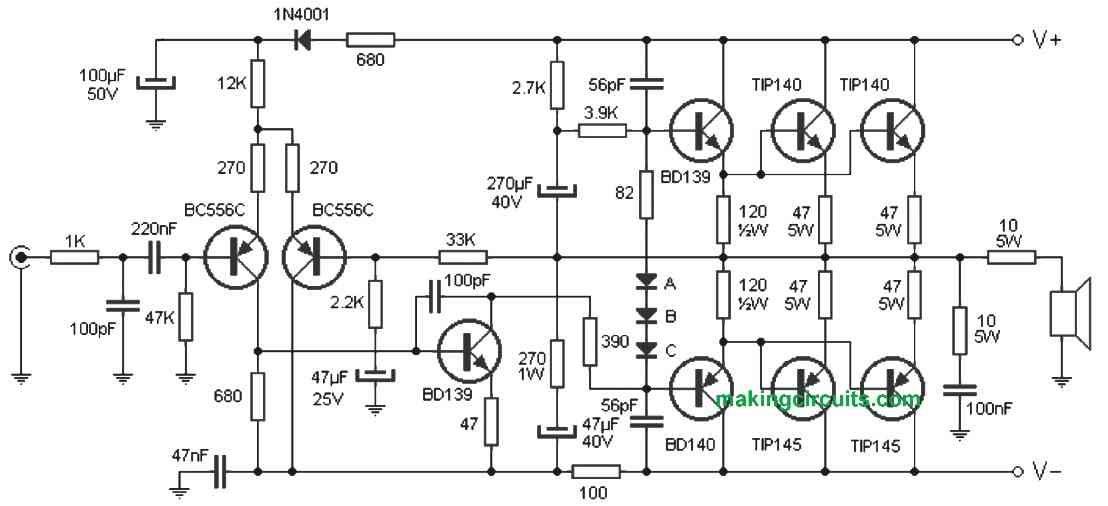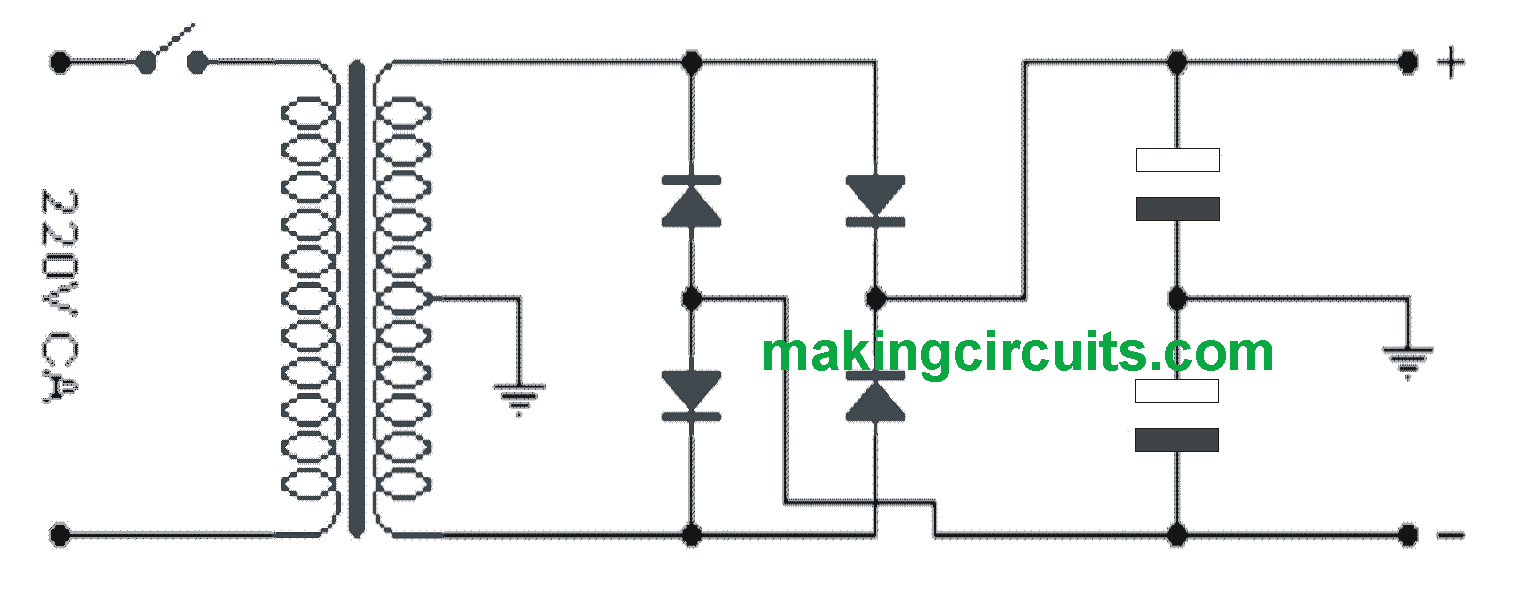For hobbyists and music lovers who are interested to get more audio power from a simple amplifier circuit, here we present this 300 watt power amplifier circuit capable of delivering overloaded 300w RMS over a load of 8 ohms, and over 350 watts with 4 Ohm speakers.

The proposed amplifier circuit uses complementary transistors to achieve the intended high power with Hi-Fi quality. The unit is powered with a 45V + 45V supply, with current not more than 7 amps. Most of the incorporated transistors barring the BC556C must be mounted on the heatsink, which must be prferably fixed over one of the sides of the cabinet to facilitate proper dissipation.
The diodes marked A, B and C are 1N4007 and these too must also be mounted on the heat sink but with thermal grease. The music fed to the amplifier input must be 1Vpp standard line.
As shown in the diagram the specified power supply does not need to be a complex stabilized but must be adequately filtered using high value filter capacitors. I personally recommend the following specifications for this 300 watt amplifier circuit power supply:
You can use a transformer with a secondary section that has a central socket 32-0-32 (or 64V with central socket). For a mono configuration it must have a current of 5A, for stereo 10A. The diodes should be at least 100V by 8A for mono and 100V for 16A for stereo. The capacitors must be 4700μF 63V each. Do not use higher voltages as this would affect the working curve of the capacitor (not filtering optimally).

Muito bom esse amplificador, qualidade sonora boa.
Does this circuit have a volume control or can a volume/tone control be added later?
No, there’s no built-in volume or tone control in the shown design. You can add a separate tone-control/volume-control module at the input side of the amplifier
De emmiter weerstanden zijn 47 ohm , dat is toch biet juist ?
yes the emitter resistors are 47 ohms.
why is the resistor series with speaker?
To limit excessive current
please kindly send me the latest power amplifier circuit diagram thanks
the above amplifier is the latest one, and is an universal evergreen model…
El amplificador no puede funcionar así con una resistencia en serie de 10 Ohms 5 W en serie con el parlante. Todos copian y pegan.
Then what should it be its value? Please update it.
just to discuss the 10 ohm resistor. Perhaps the schematic was copied incompletely. There is normally a (hand made) wire INDUCTOR in parallel with the 10 ohms. The work instructions read like: “take 20 inches of #14 wire, and wrap the wire around the 10 ohm resistor” and this becomes the OUTPUT NODE of the amplifier